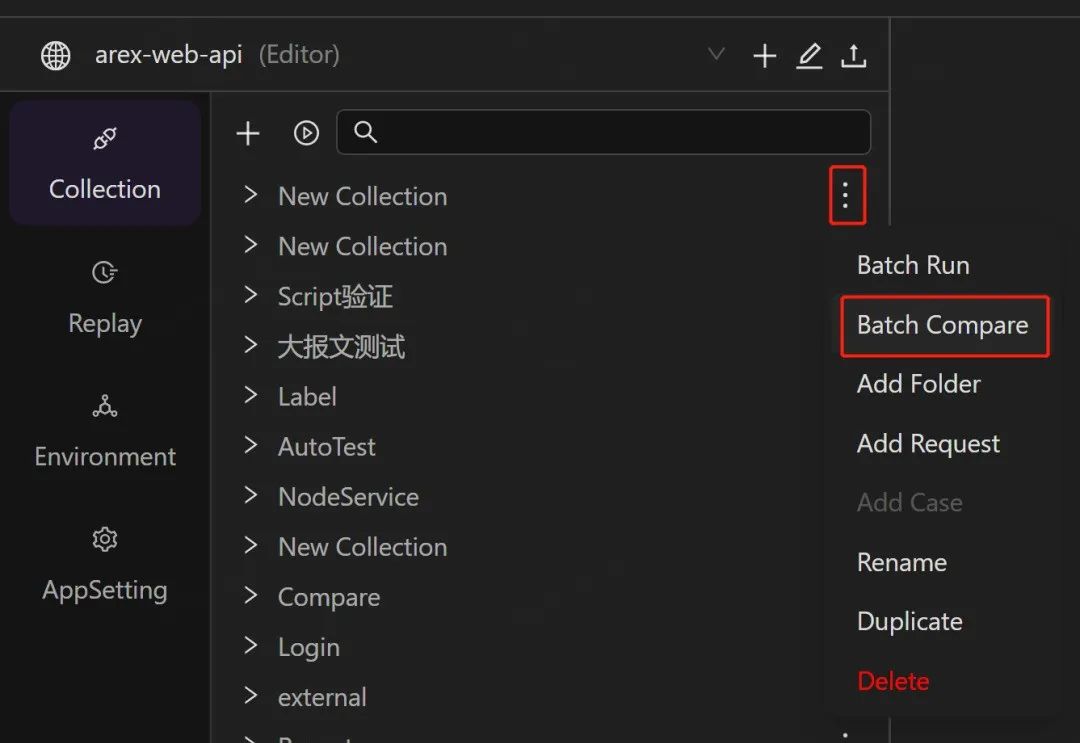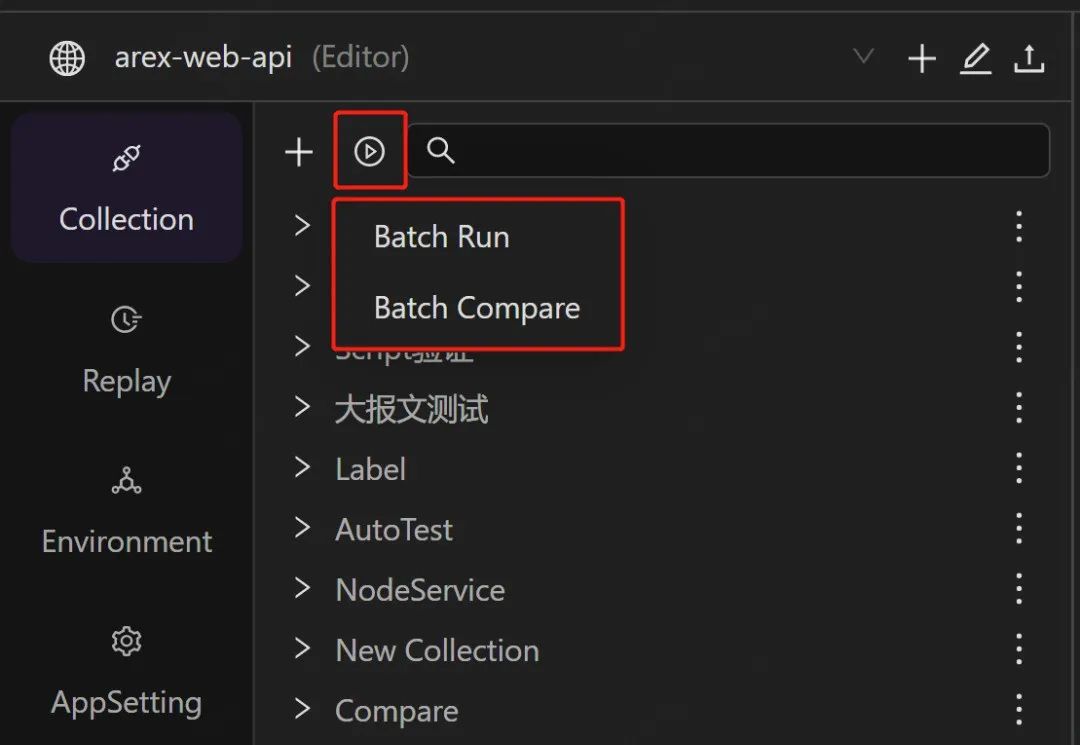AREX version 0.2.7 is released! The new version visualizes the different points between recording and replay, adds new comparison tests and batch comparison functions, and unlocks more test case management functions.
Refactor replay test analysis function to visualize call differences
The analysis report for replay testing in previous versions is shown below:

In the new version 0.2.7, the replay report visualizes the differences between the response of the main path and third-party calls during recording and replay, helping users to understand the differences between recording and replay more intuitively. The following figure shows two differences:
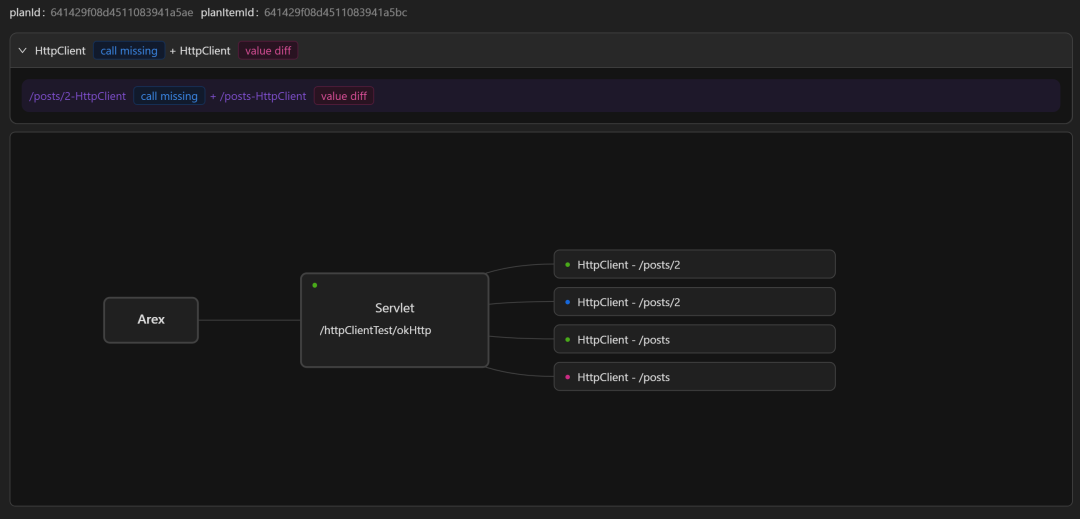
HttpClienthas a missing call to the third-party dependency/posts/2during replay, i.e. HttpClient does not make the request to/posts/2 correctly during replay.- HttpClient's call to the third-party dependency
/postsduring replay results in a value diff relative to the recorded result.
🟢 indicates that there is no difference in the comparison results, as in the example above, the return result of the main path /httpClientTest/okHttp after replay is not different from the recording.
Add label configuration and description configuration for test cases
In 0.2.7 version, more management functions are added to the test cases. At present, you can add tags to test cases (Add Tag) to classify them, and the function of searching cases by tags will be added later to facilitate management.

In addition, a description can be added to the use cases to improve the readability, making it easier for the collaborators to understand the purpose and expected results of the test case, and to better grasp the test content.
Add comparison test and batch comparison function
In order to compare the response messages from two different request URLs, we can use AREX for comparison testing, which involves sending the same request message to different API addresses and comparing the differences in the response messages. For example, When the back-end system is refactored (or architecture upgraded), compare the response data returned from the new and old system interfaces to ensure that the redevelopment did not bring any interface problems.
Typically, there are many scenarios to be tested in comparison testing, and manual comparison for each scenario can be time-consuming and result in low testing efficiency. By saving every comparison scenario as test cases and running them in batch, we can automate the testing process and improve the speed and efficiency of software testing.
Select Batch Compare from the dropdown list of the collection which you want to run.
Or you can move your cursor to the "batch run" icon in the sidebar and select Batch Compare.
Select the comparison cases from the list and select Run Compare to run.
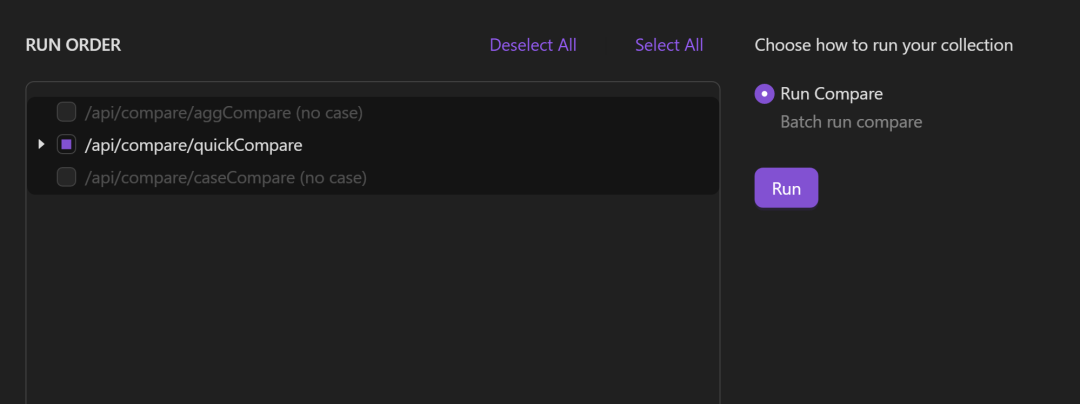
After running, you can see all case comparison results.

It will display the specific location of the node in the response message when you move your cursor to the path.

Test cases inherit the parent interface request configuration by default
In version 0.2.7, new test cases created under the interface request will automatically inherit the configuration of the current interface request, such as URL, request method and Parameters, Header, Body and Pre-request Script.
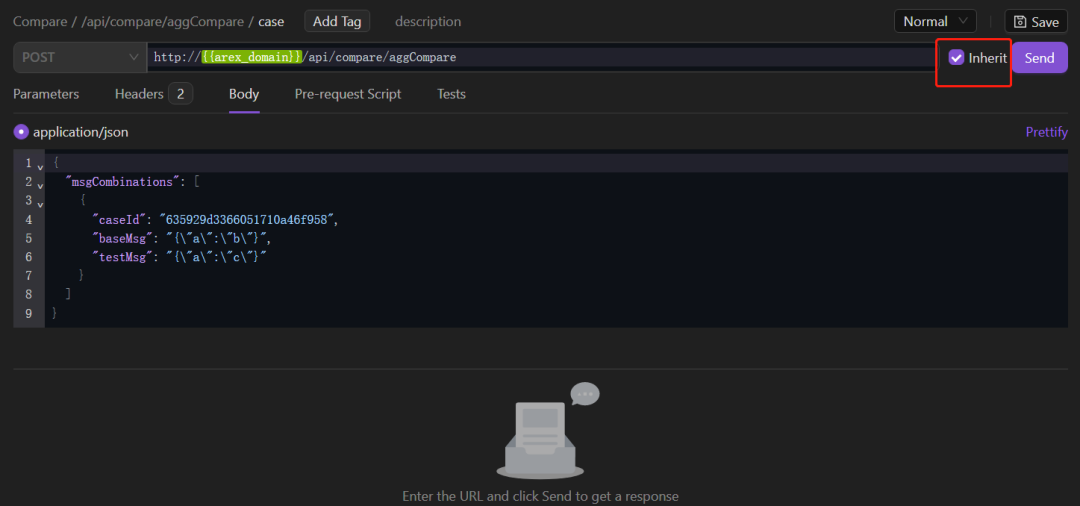
By inheriting the interface request configuration from the parent node, the test cases do not need to redefine the request parameters and pre-scripts of the interface one by one, thus reducing the workload and time for test case writing.
Download AREX 0.2.7
- Install with Docker:
git clone https://github.com/arextest/deployments.git
cd deployments
docker-compose up -d
- Deploy Agent: See the details in Docs.
